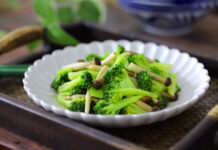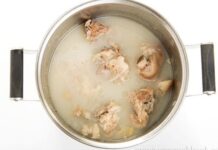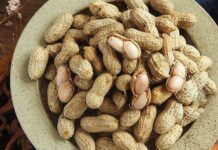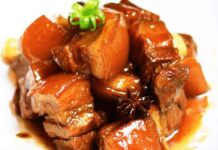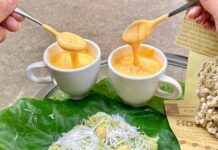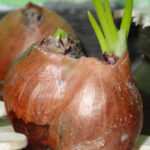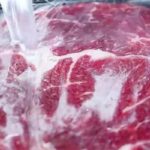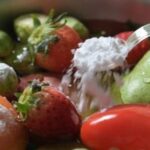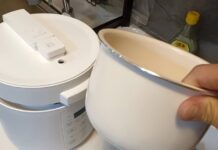Leafy Greens

Leafy greens are a favorite target of pests, so they are often treated with excessive pesticides and nitrogen-based fertilizers before harvest.
Over-fertilized leafy greens usually have stout, evenly spaced stems, with no signs of insect damage or leaf abnormalities. Their leaves are abnormally large and dark green, indicating high levels of nitrates, which can be harmful if consumed, especially raw.
For leafy greens with edible stems, it is advisable to cut off the base, separate the leaves, and rinse them individually. Soak them in a dilute salt solution for about 15 minutes, and then rinse each leaf under running water several times before cooking.
Bean Sprouts

Consumers often prefer bean sprouts with large, round, white, crisp, and sparsely rooted sprouts. However, achieving this quality requires skilled sprout cultivation.
To simplify the process and standardize sprout quality, sprout growers often use leaf fertilizers mixed with diluted weed killers (to target roots without affecting sprouts) for irrigation and incubation.
These lower-quality sprouts tend to release cloudy water when stir-fried or used in salads.
Celery

Celery with thick stalks, pale white roots, and rapid wilting indicates excessive use of pesticides (organic phosphorus compounds) and leaf fertilizers.
Bitter Melon

Bitter melon with large, pale green fruit, swollen stems, and shiny skin is typically harvested from plants treated with excessive nitrogen and growth stimulants, which can be toxic.
Choose bitter melon with moderate-sized fruit and a fine network of tiny veins on the skin for a safer option.
Tomatoes

Naturally ripened tomatoes vary in size and color, with some parts red and others yellow or orange due to uneven sun exposure. The parts exposed to more sunlight tend to ripen faster.
When tomatoes are not allowed to ripen naturally, their stems remain hard.
Cucumbers

The best cucumbers are those with a whitish-green color (not too young or yellowing), smooth skin, firm to the touch, and small bumps on the surface.
Cucumbers that have been excessively treated with pesticides and growth regulators before harvest tend to be long, smooth, and light green, sometimes with white streaks from residual chemicals.
It is advisable to peel and thoroughly wash cucumbers before consumption or cooking.
It can be challenging for consumers to choose truly clean vegetables, but with a little knowledge, it is possible to filter out those that appear “dangerous” due to chemical residue and reduce the risk of poisoning.
For more information, visit: 24h.com.vn
Mastering the Art of Chopping Board Care: A Guide to Longevity and Sanitation
Introducing the ultimate guide to cutting board care: unlock the secrets to maintaining and preserving your chopping boards, ensuring they remain pristine and durable. Discover the dos and don’ts of chopping board maintenance, and elevate your kitchen game with these expert tips and tricks. Learn how to care for your cutting boards like a pro and impress your guests with your culinary prowess.
Does Soaking Fruits and Vegetables in Brine Remove Pesticides and Toxins from the Skin?
Introducing a revolutionary approach to vegetable washing that defies conventional methods: a simple rinse with salted water is not enough to eliminate harmful bacteria and pesticide residues. On the contrary, it may even cause a reverse osmosis effect, pushing chemicals and bacteria deeper into the vegetables’ crevices. It’s time to unveil a safer, more effective way to cleanse your produce.











